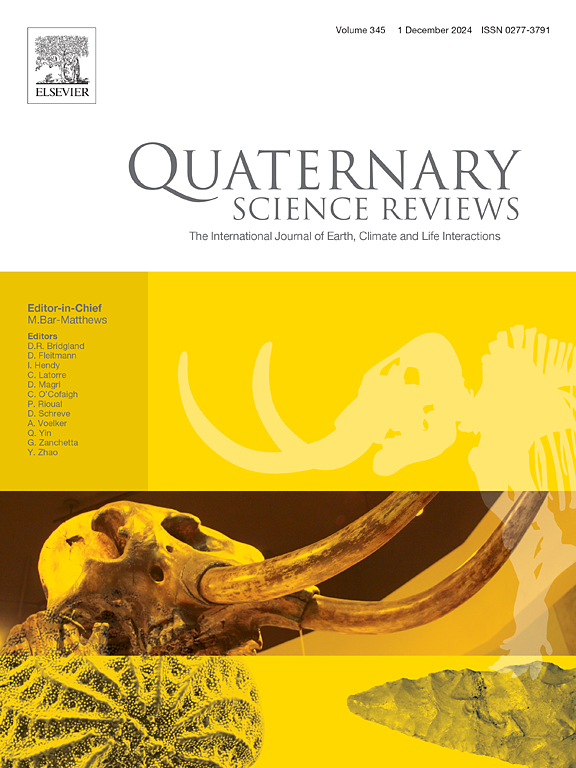Brine exploitation at Cacica (Romania): An application of radial model of salt supplying
IF 3.3
1区 地球科学
Q1 GEOGRAPHY, PHYSICAL
引用次数: 0
Abstract
Drawing on ethnoarchaeological field research conducted in Romania's Outer Carpathian region between 2007 and 2015, an ethnographic radial model for the supply of brine, recrystallized salt, and rock salt was developed. This paper aims to apply this model to prehistoric contexts, specifically the Neolithic, Chalcolithic, and Bronze Age periods, in relation to the brine sources at Cacica. The selection of this area is grounded in several factors: the presence of multiple brine sources, the use of the briquetage technique (a method for producing salt cakes in ceramic containers) during a specific phase of the Chalcolithic, extensive documentation from ethnographic and ethnohistorical studies, and a rich database on prehistoric settlement patterns.
At Cacica, two distinct methods of brine exploitation were identified: the production of salt cakes and the direct use of brine without human intervention, primarily for human and animal consumption. The authors utilized the Radial Model of Salt Supply to analyse these two methods of exploitation and suggest that this dual model could offer valuable insights into the understanding of inland briquetage sites across worldwide.
卡奇卡(罗马尼亚)的卤水开采:盐供应径向模型的应用
根据 2007 年至 2015 年期间在罗马尼亚外喀尔巴阡山地区开展的人种考古学田野调查,我们建立了一个卤水、重结晶盐和岩盐供应的人种学径向模型。本文旨在将这一模型应用于史前时期,特别是新石器时代、夏尔科利石时代和青铜时代,与卡奇卡的卤水源有关。选择该地区有几个因素:存在多个盐水源头、在旧石器时代的一个特定阶段使用了压块技术(一种在陶瓷容器中生产盐饼的方法)、人种学和人种史研究中的大量文献资料以及丰富的史前定居模式数据库。在卡西卡,发现了两种不同的盐水开采方法:生产盐饼和在没有人为干预的情况下直接使用盐水,主要用于人类和动物消费。作者利用盐供应径向模型分析了这两种开采方法,并认为这种双重模型可以为了解世界各地的内陆盐饼遗址提供宝贵的见解。
本文章由计算机程序翻译,如有差异,请以英文原文为准。
求助全文
约1分钟内获得全文
求助全文
来源期刊

Quaternary Science Reviews
地学-地球科学综合
CiteScore
7.50
自引率
15.00%
发文量
388
审稿时长
3 months
期刊介绍:
Quaternary Science Reviews caters for all aspects of Quaternary science, and includes, for example, geology, geomorphology, geography, archaeology, soil science, palaeobotany, palaeontology, palaeoclimatology and the full range of applicable dating methods. The dividing line between what constitutes the review paper and one which contains new original data is not easy to establish, so QSR also publishes papers with new data especially if these perform a review function. All the Quaternary sciences are changing rapidly and subject to re-evaluation as the pace of discovery quickens; thus the diverse but comprehensive role of Quaternary Science Reviews keeps readers abreast of the wider issues relating to new developments in the field.
 求助内容:
求助内容: 应助结果提醒方式:
应助结果提醒方式:


